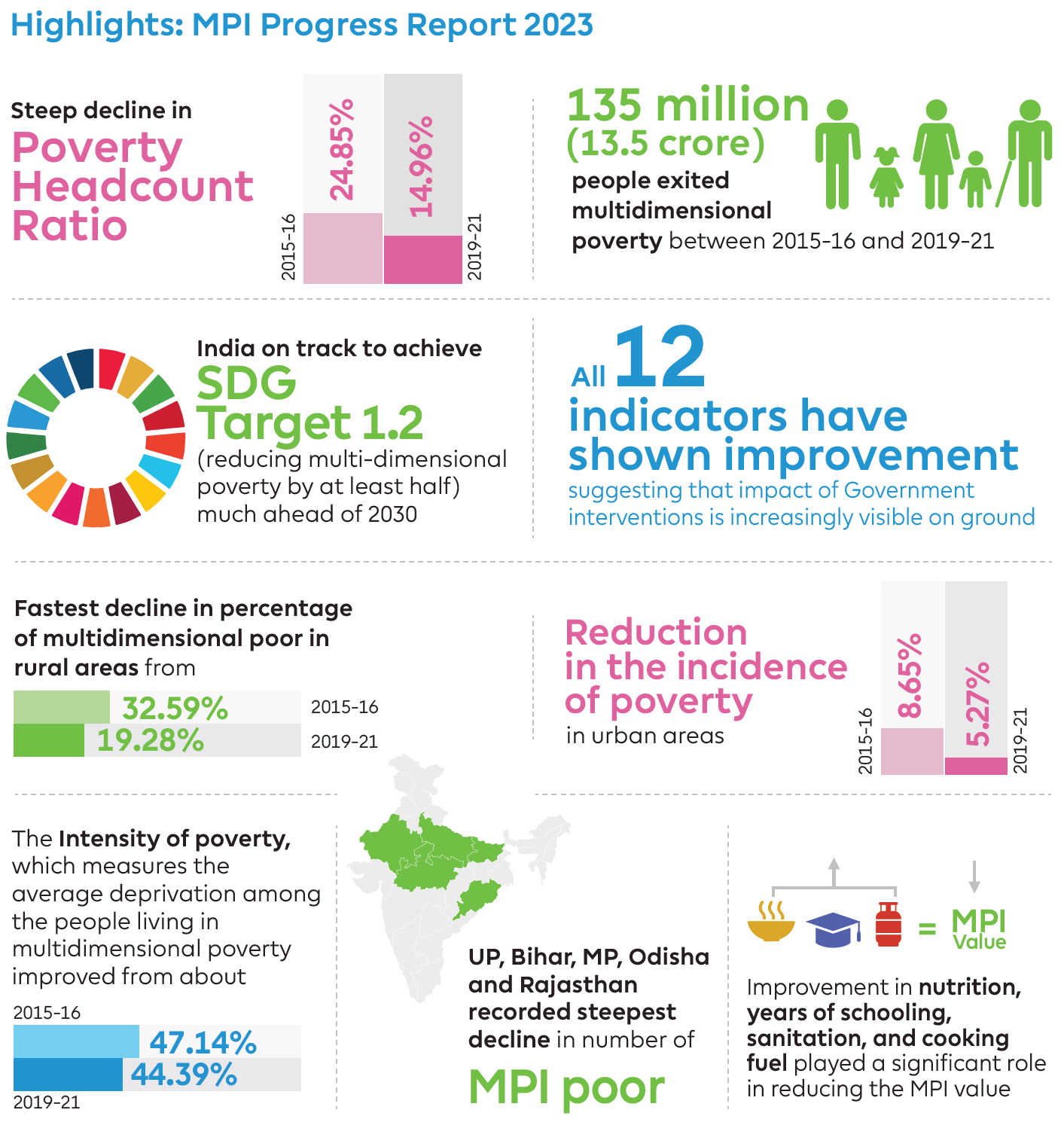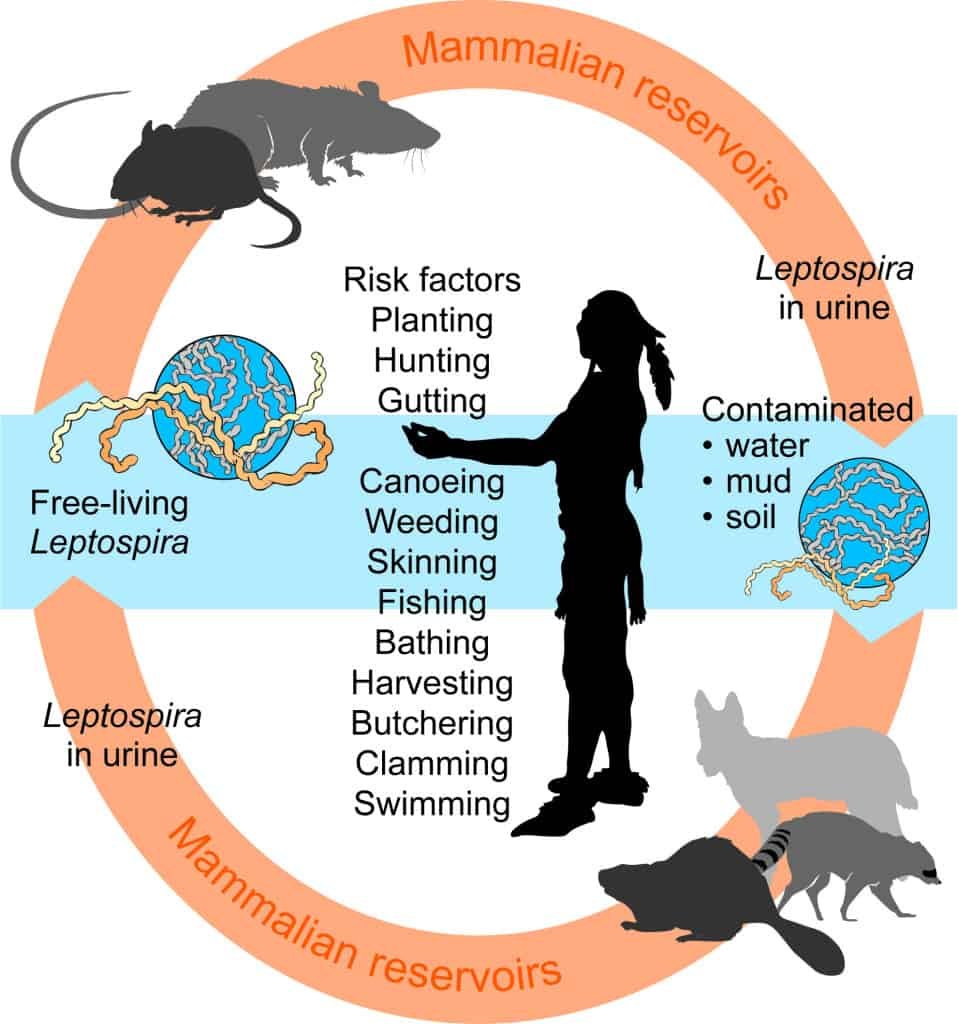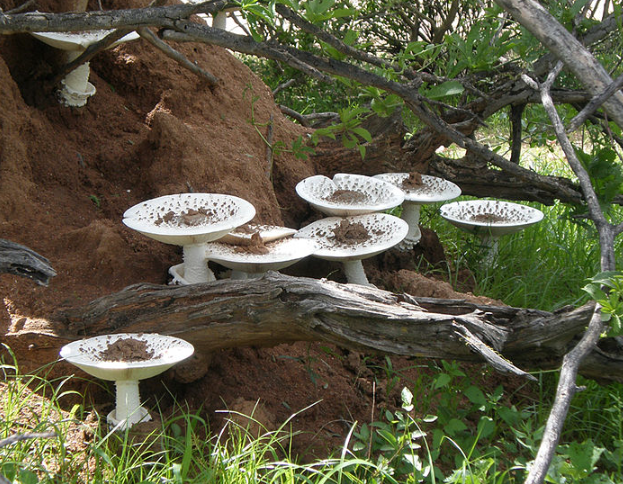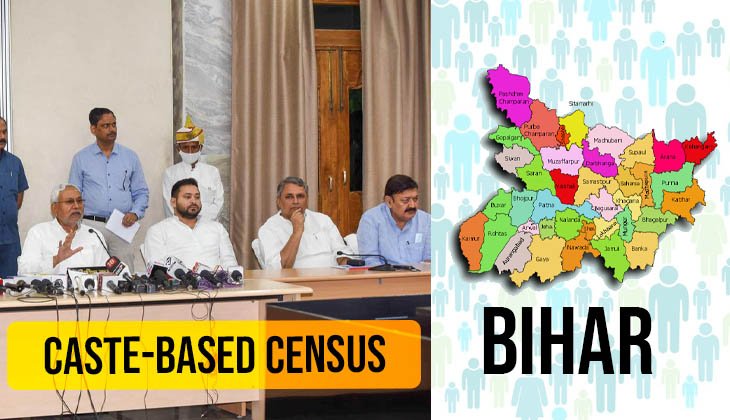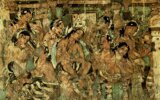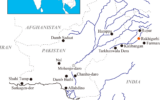
Current Affairs for UPSC Civil Services Exam – June 01, 2024
Subscribers of "Current Affairs" course can Download Daily Current Affairs in PDF/DOC
Subscribe to Never Miss an Important Update! Assured Discounts on New Products!
Must Join PMF IAS Telegram Channel & PMF IAS History Telegram Channel
{GS1 – MIH – Personalities} Ahilya Bai Holkar *
- Context (IE): The 300th birth anniversary of the Maratha queen Ahilya Bai Holkar was celebrated.
- She was the queen of Indore within the Maratha Confederacy. She established Maheshwar (in Madhya Pradesh) on the banks of the Narmada River as the capital of the Holkar Dynasty.
- She was born in 1725 to a Dhangar/Gadariya (shepherd) family in Maharashtra’s Ahmednagar district.
- Her father, Mankoji Shinde, was from a respectable Dhangar (Gadariya) family who served as the Patil (title like village head).
- Although women did not go to school back then, Ahilyabai’s father taught her to read and write.
- She married Khande Rao Holkar, son of Malhar Rao Holkar, an army commander to Peshwa Bajirao.
Battle of Kumbher (1754)
|
- Malhar Rao Holkar died in 1766, 12 years after the death of his son Khande Rao. Then Khande Rao’s only son, Male Rao Holkar, became the ruler of Indore in 1766, under Ahilyabai’s regency.
- Male Rao Holkar, too, died in April 1767. Then Ahilyabai took over as ruler of Malwa with Tukoji Rao Holkar (Malhar Rao’s adopted son and a soldier in his army ) as her military head.
- She worked to preserve and encourage India’s spiritual integrity and displayed administrative ingenuity and political impartiality.
Contributions
Renovation of temples
- Ahilya Bai resurrected the jyotirlingas across the country as a tribute to Lord Shiva.
- She carried out renovations in Somnath temple, Kashi Vishwanath temple Varanasi (1780), Trambak, Gaya, Pushkar, Vrindavan, Nathdwara, Haridwar, Badrinath, Kedarnath and many other sacred sites.
Other contributions
- She patronised many artists, including Marathi poet Moropant, Shahir Ananta Gandhi, and Sanskrit scholar Khushali Ram.
- She promoted Maheshwari saris (from Maheshwar) and paved the way for empowering women.
- Ahilyabai repealed a traditional law that allowed the state to confiscate the property of childless widows.
- She made efforts to develop the city of Indore, conserve forests and animals, and was responsible for the flourishing trade and commerce.
Legacy
- She was described as “a very able ruler and organiser” by Jawaharlal Nehru in ‘A Discovery of India’.
- A proposal to rename Ahmednagar as ‘Punyashlok Ahilyadevi Nagar’ is being discussed.
{GS2 – Polity – IC – Comparison} Can a covict be US President ?
- Context (IE): Donald Trump, former U.S. President and 2024 Republican frontrunner, was convicted of falsifying records to hide a 2016 hush money payment.
Impact on Trump’s Campaign, Candidacy, and Voting Rights
- Trump is currently free to campaign and could continue to do so even from prison after sentencing (in 1920, Eugene V Debs campaigned from prison).
- Thus, there is no bar for presidential candidacy based on a candidate’s criminal record.
- Republican party nomination: With majority delegate support, there is no mechanism to nominate anyone other than Trump at the Republican Convention.
- Trump could legally be elected president even if imprisoned. The U.S. Constitution does not disqualify a candidate due to imprisonment.
|
Qualifications for election as President |
|
| India (Article 58) | USA |
|
|
|
|
|
|
|
Voting Rights for Trump
- Whether Trump can vote in the election depends on his sentence.
- Florida revokes voting rights for felons (criminals convicted of a serious crime), but New York allows voting while on parole or probation, which may affect his status based on the conviction location. If imprisoned, Trump would lose his voting rights.
|
{GS2 – Polity – IC – Elections} Exit Polls *
- Context (IE): The Lok Sabha Elections 2024 will end on June 1st, after which exit polls will be released.
What are Exit Polls?
- Exit polls are surveys conducted with voters as they leave a polling station during an election.
- The purpose is to gather information on how people voted and their demographic characteristics.
- These polls provide early indications of election results before official results are announced.
- The Indian Institute of Public Opinion was the first one to conduct an exit poll during the second Lok Sabha elections in 1957.
Limitations of Exit Poll
- These surveys can be influenced by the choice, wording and timing of the questions.
- Prone to error: It relies on a random sample, may not be the true representative of the electorate.
- Non–response bias: Not all selected voters in the sample genuinely participate and respond.
- Volatility of Voter behaviour: Last-minute voter sentiment changes can affect predicted election results.
- Absentee Voters: It does not cover absentee voters, who may vote through postal ballots.
Exit Poll vs. the Opinion Poll
|
Exit Poll Regulation in India
Need of Regulation
- Exit polls, if released prematurely, can potentially influence voting behaviour.
- Accurate and reliable information: It must be regulated to preserve electoral integrity and prevent the dissemination of false and misleading predictions about voting trends.
- By regulation, stability and confidence in the electoral process are promoted.
RPA, 1951
- Section 126: It prohibits conducting exit polls and disseminating results via print or electronic media from the start of the first phase until half an hour after the last phase ends.
- Under Article 324, ECI prohibits the media agencies from publishing or releasing the results of exit polls.
- The ECI usually imposes a “prohibition period” on publishing or disseminating exit poll results.
- Punishment: Violators of the directive could face a two-year prison term, a fine, or both.
- ECI also mandates that media agencies conducting exit polls register with the ECI.
Status of Exit Poll In Other Countries
- USA: There are no laws in the US to regulate the practice of exit polls. However, the results are not published until the voting is completed.
- Germany: Exit polls are strictly regulated in Germany. It is considered a crime to release the results of an exit poll before the completion of voting in all polling stations.
- UK: The publication of exit poll results is not regulated by law, but media outlets refrain from publishing results until voting in all polling stations has ended.
- Singapore: In Singapore, a complete ban on exit polls has been imposed.
{GS2 – Polity – IC – Elections} Working of Polling Booths in India **
- Context (IE): The Election Commission of India is set for the last phase of Lok Sabha polls, with 57 constituencies across 8 States/UTs scheduled for voting.
Establishing Polling Station
Section 25 of the RPA 1951, the District Election Officer (DEO) is responsible for setting up and publishing the list of polling stations within a district.
-
Guidelines:
- Voters should not travel more than 2 km to cast their vote
- Minimum area of 20 sq m for each polling station
- A maximum of 1,500 electors per polling station
- Villages with over 300 voters must have a polling station
- However, these principles are flexible to accommodate various situations. E.g. Arunachal Pradesh’s Malogam polling station serves a single voter.
- Critical polling stations identified by the ECI require heightened security measures due to their vulnerability, abnormal law and order situations, or unusual voter turnout rates.
Personnel and Restrictions inside Polling Stations
| Allowed Inside Polling Stations | Not Allowed Inside or within 100-meter radius |
|
|
Steps taken to address the challenges in Polling Stations
- The ECI has taken steps to mitigate the impact of heatwaves on voters and polling staff through various arrangements such as shade structures, proper ventilation, cooling devices, etc.
- The ECI’s Saksham App allows specially-abled voters to book wheelchairs, use pick-up and drop-off services, and receive assistance at the polling booth.
Staff Allocation and Last-Minute Preparations
- Each polling booth, which caters up to 1,100 votes, is manned by 4 to 6 staff members (appointed just a day before polls), including Booth-Level Officers (BLO), who are appointed weeks in advance.
- A polling station can contain multiple booths in the same building.
Role of BLOs
|
Polling Day Preparations and Mock Polls
- On the day of polling, mock polls are held at 5 am to check whether the EVMs are functioning correctly. Normally, mock polling sees five votes polled for each candidate, the results of which are later checked.
- Polling commences at 7 am and continues until 6 pm.
- After the polls close, the EVMs are sealed and transported to designated counting centres.
{GS2 – Polity – IC – FRs} High Court Judge Registers Goa’s First ‘Living Will’
- Context (IE): Justice M S Sonak of the Goa Bench of the Bombay High Court became the first person in Goa to register a “living will“.
- Goa has become the first state in India to formalise and implement the Supreme Court’s directives on living wills and passive euthanasia.
Living Will
- A living will, also known as an advance medical directive, is a written document that specifies the actions to be taken regarding a person’s medical treatment if they become incapacitated and unable to make decisions for themselves.
- It allows individuals to express their preferences for end-of-life care, such as whether they want to be kept on life support or receive palliative care.
- Living wills are legally binding documents that must be drafted in the presence of witnesses and certified by a gazetted officer or notary.
Passive Euthanasia
- Passive euthanasia refers to the withdrawal of life-sustaining treatment from a terminally ill patient, allowing them to die naturally.
- It is different from active euthanasia, which involves taking deliberate steps to end a patient’s life, such as administering a lethal injection.
- Passive euthanasia is legal in India, subject to guidelines set by the Supreme Court.
SC Judgements
- In 2018, the Supreme Court legalised passive euthanasia, contingent upon the person having a living will. It recognised the right to die with dignity as a fundamental right under Article 21.
- Guidelines were issued to regulate the procedure for passive euthanasia, including the need for a living will and the involvement of medical boards and judicial magistrates.
- In 2023, the Supreme Court eased the process for passive euthanasia by modifying the existing guidelines for living wills that aimed to simplify the process and make it more accessible to individuals who wish to exercise their right to die with dignity.
{GS2 – Polity – IC – FRs} Statutory Bail
- Context (IE): Despite being granted bail by the Delhi High Court, JNU scholar Sharjeel Imam remains in custody due to other pending cases (E.g. 2020 North East Delhi riots).
- He was arrested in 2020 for allegedly delivering an inflammatory speech and has been charged with sedition and unlawful activity under the Unlawful Activities Prevention Act (UAPA).
Grounds for statutory bail
- Section 436-A of the Code of Criminal Procedure (CrPC) allows an undertrial to be released on bail if they have served half of the maximum period of imprisonment prescribed for the offence.
- Section 436-A aimed to tackle the issue of the rising population of undertrials in prison.
|
- For bailable offences, it is mandatory for courts to grant bail under Section 436 of the CrPC. In the case of non-bailable offences, it is the court’s discretion to grant bail.
Types of Bail
|
|
Unlawful Activities (Prevention) Act (UAPA)
- The Unlawful Activities (Prevention) Act (UAPA) is an anti-terror law enacted in 1967 and strengthened through amendments in 2004, 2008, 2012, and 2019.
- The act defines a terrorist act as any act committed with the intent to threaten India’s unity, integrity, security, economic security, or sovereignty or to strike terror in the people.
- In 2023, the Supreme Court ruled that mere membership of an unlawful outfit is a UAPA offence.
- It gives the state more power than the Indian Penal Code (IPC), including more time to file chargesheets. Bail conditions are stringent, with courts having little room for judicial reasoning.
{GS2 – Social Sector – Disease} Anaplastic Lymphoma Kinase (ALK)
- Context (TH): Lorlatinib, a Pfizer lung cancer drug, has reduced tumour progression in people with anaplastic lymphoma kinase (ALK)-positive advanced non-small cell lung cancer (NSCLC).
- Lung cancer is the leading cause of cancer deaths globally. NSCLC accounts for over 80% of lung cancer cases, with ALK-positive tumours accounting for about 5% of NSCLC.
- ALK-positive NSCLC mostly affects younger patients and is not strongly linked to smoking.
- It is very aggressive, with 25-40% of ALK-positive NSCLC patients developing brain metastases within two years. Brain metastases occur when cancer spreads from another part of the body to the brain.
{GS3 – Envi – Conservation} Canopy Bridges Across Track in Gibbon Habitat*
- Context (TH): The Northeast Frontier Railway (NFR) has earmarked funds to construct canopy bridges for hoolock gibbons to move across the Mariani-Dibrugarh railway track.
- The railway track set to be doubled and electrified is bifurcating the Hollangapar Gibbon Sanctuary.
- The fragmentation has disturbed the gibbon’s arboreal nature, putting it at risk when crossing the track.
- Designed by the Wildlife Institute of India (WII), the canopy rope bridges will be installed so that lianas and creepers can be guided along them, making them look as natural as possible. Earlier, the NFR built an artificial canopy bridge, while the State Forest Department erected a natural one. The gibbons used the natural canopy but ignored the artificial bridge.
Hoolock Gibbon
- The Hoolock gibbons (or the white-browed gibbons) are one of 20 species of apes on Earth.
- They are the only ape species found in India.
- Hoolock gibbons are the second largest of the gibbons, after the Siamang.
- Appearance:
- Both male and female gibbons are similar in size but differ significantly in colouration. Males are black with striking white brows, while females have grey-brown fur, darker at the chest and neck.
- White rings around the eyes and the mouth give their face a mask-like appearance.
- Behaviour:
- They are diurnal and arboreal. With slender, long arms, they swing from tree to tree in a mode of locomotion known as Brachiation. They can brachiate at speeds up to 55km/hr and can cover 6m in just one swing. They spend much of their time on the upper canopy of tall trees, mostly the hollong.
- They live together in monogamous pairs, which stake out a territory.
- They are known for their vocalisation, through which they locate family members and ward off other gibbons from their territory.
- Their diet consists mainly of fruits, insects and leaves.
- Reproduction: Females give birth to one offspring every 2-3 years. Young hoolocks are born after a 7-month gestation with milky white fur. They become fully mature after 8 to 9 years.
- Life expectancy: About 25 years in the wild.
|
|
Western Hoolock Gibbon |
Eastern Hoolock Gibbon |
|
|
|
|
 |
 |
Hollongapar Gibbon Sanctuary
- Hoollongapar Gibbon Sanctuary is an evergreen forest area located in the Jorhat district, Assam.
- It is home to the western hoolock gibbon and Bengal slow loris, NE India’s only nocturnal primate.
- Other primate species it shelters are the Assamese macaque, the capped langur, the northern pig-tailed macaque, the rhesus macaque, and the stump-tailed macaque.
- Concern: It has become a forest island due to lost connectivity with surrounding forest patches.

{GS3 – Envi – Issues} State of India’s Environment In Figures 2024 **
- Context (DTE): “State of India’s Environment In Figures: 2024” is the annual publication by Down to Earth, and the Delhi-based think tank Centre for Science and Environment was released.
- The analysis is based on the India Meteorological Department (IMD) data for 2023.
Warming in India
- In 2023, India endured its second-hottest year on record, marked by remarkably warm winters, monsoons and post-monsoon periods.
- At least 102 weather stations in India exceeded their monthly highest 24-hour maximum temperature in 122 years.
- These include ten million-plus cities — Bengaluru, Jamshedpur, Kochi, Kota, Kozhikode, Lucknow, Madurai, Thiruvananthapuram, Thrissur and Visakhapatnam.
- India recorded its hottest minimum temperature in 122 years in 2023. The highest minimum temperature for December in 122 years registered a notable anomaly of 1.71°C above normal.
- The trend for minimum temperatures in 2023 and 2024 suggests a new normal, indicating that nights are becoming warmer.
{GS3 – IE – External Sector} RBI allows Opening of Rupee A/c Outside India
- Context (IE): The Reserve Bank of India (RBI) has allowed the opening of rupee accounts outside India by persons resident outside India (PROIs).
- It is part of its strategic action plan to internationalise the Indian Rupee (INR).
|
Other Measures
Liberalisation of External Commercial Borrowing (ECB) Framework
- The RBI has also finalised plans to liberalise the external commercial borrowing (ECB) framework, which will provide more flexibility to Indian companies in accessing foreign funds.
- The central bank will also launch the first phase of the software platform for ECBs and trade credits reporting and approval (SPECTRA) project, streamlining the process and improving transparency.
INR Lending and Special Accounts for Investments
- Indian banks will be permitted to lend INR to PROIs, facilitating cross-border transactions.
- Also, the RBI will enable foreign direct investment (FDI) and portfolio investment through special accounts, namely the Special Non-Resident Rupee (SNRR) account and the Special Rupee Vostro Account (SRVA), further promoting the use of the rupee in international investments.
|
Rationalisation of Regulations
- The RBI will focus on rationalising various guidelines related to the Foreign Exchange Management Act (FEMA) to align them with the evolving macroeconomic environment.
- This includes rationalising the Liberalised Remittance Scheme (LRS) and reviewing the International Financial Services Centre (IFSC) regulations under FEMA.
|
{GS3 – IE – Securities} India’s First Electric Vehicle Index
- Context (DTE): NSE Indices Ltd, a subsidiary of the NSE, has launched the country’s first-ever electric vehicle (EV) index (Thematic)called the “EV and New-Age Automotive Index.”
- The index comprises companies involved in EV manufacturing, new-age automotive vehicles, electric batteries, and their components, as well as producers and suppliers of raw materials for EVs.
- It also includes manufacturers of autonomous vehicles and suppliers of related technologies.
- Index will have a base year of 2018 and a base value of 1000 with semi-annual reconstitution.
Significance of the EV Index
- It is expected to facilitate the creation of investment products in the growing EV market.
- It will be a benchmark for asset managers and a reference index for passive funds, such as Exchange-Traded Funds (ETFs), index funds, and structured products.
- It will help to track the performance of companies that form a part of the EV ecosystem in India.
Sectoral indices vs Thematic indices
| Sectoral Indices | Thematic Indices |
|
|
|
|
|
|
{GS3 – S&T – BioTech} New method to produce recombinant proteins
- Context (TOI): IISc finds a safer way to mass production recombinant proteins like insulin.
- It uses the common food additive monosodium glutamate (MSG) instead of the hazardous methanol.
- Researchers hope that this can be used in biotech industries to mass-produce valuable proteins, including milk and egg proteins, baby food supplements, and nutraceuticals, as well as therapeutics.
- Hazardous conventional method involves using the yeast Pichia pastoris (Komagataella phaffii) activated by methanol, which is highly flammable and hazardous, requiring stringent safety precautions.
Novel method using MSG
- MSG, a USFDA-approved food additive, can activate a different promoter in the yeast genome that codes for an enzyme called phosphoenolpyruvate carboxykinase (PEPCK). This leads to protein production similar to methanol activation.
- Ethanol is further added to help the cells grow faster, which increases the biomass and the amount of recombinant protein produced, making it safer for yeast cells.
- The new method produced twice the amount of antigen compared to the methanol-induced process.
{Prelims – In News} Nelson Mandela Award for Health to NIMHANS
- Context (TH) | (PIB): NIMHANS bags the Nelson Mandela Award for Health Promotion for 2024 by the World Health Organization at the 77th World Health Assembly.
- WHO established the award in 2019 upon the initiative of the African Region.
- It recognises individuals, institutions and/or governmental or non-governmental organisations that have demonstrated remarkable contributions to health promotion.
- The Award aims at rewarding work that has extended far beyond the call of normal duties.
National Institute of Mental Health & Neuro Sciences (NIMHANS), Bengaluru
- It is an Institute of National Importance under the Ministry of Health and Family Welfare.
- NIMHANS is celebrating 50 years of its formation and the 70th anniversary of the All India Institute of Mental Health (AIIMH), its precursor.
|
World Health Assembly (WHA)
- It is the decision-making body of WHO. It is attended by delegations from all WHO Member States.
- The Health Assembly is held annually in Geneva, Switzerland.
- Main functions: Determine the policies, Director General’s appointment and budget approval.
- WHA 2024 theme: All for Health, Health for All.
{Prelims – In News} Red Flag 24 Exercise
- Context (TOI): Indian Rafale jets arrived in Alaska (US) for a ‘Red Flag’ combat exercise.
- Location: Joint Pacific Alaska Range Complex, the largest combat training range in the world.
- The Red Flag 24 Exercise in Alaska is managed by the Pacific Air Forces (PACAF), the air component command of the United States Indo-Pacific Command (USINDOPACOM).
|
- Exercise Red Flag, incepted in 1975, is a two-week advanced aerial combat training exercise aimed at integrating aircrew in a multinational environment.
- India regularly participates in multi-nation exercises like the ‘Iniochos’ in Greece, the ‘Orion‘ in France, the ‘Blue Flag’ in Israel, the ‘Pitch Black‘ in Australia, and the ‘Desert Flag’ in the UAE.
{Prelims – Sci – Bio} Blood alcohol level test
- Context (IE): Blood samples in the Pune case were swapped before his blood alcohol level test.
- A blood sample should ideally be collected within 10 hours of the incident.
- The washing rate of alcohol is around 10-15 mg/ 100 mL/hour, faster in young males. It means that in a sample of 100mL of blood, 10-15 mg of alcohol is metabolised per hour.
- Based on this rate, the amount of blood alcohol level is determined at the time of the accident.







![PMF IAS Environment for UPSC 2022-23 [paperback] PMF IAS [Nov 30, 2021]…](https://pmfias.b-cdn.net/wp-content/uploads/2024/04/pmfiasenvironmentforupsc2022-23paperbackpmfiasnov302021.jpg)
